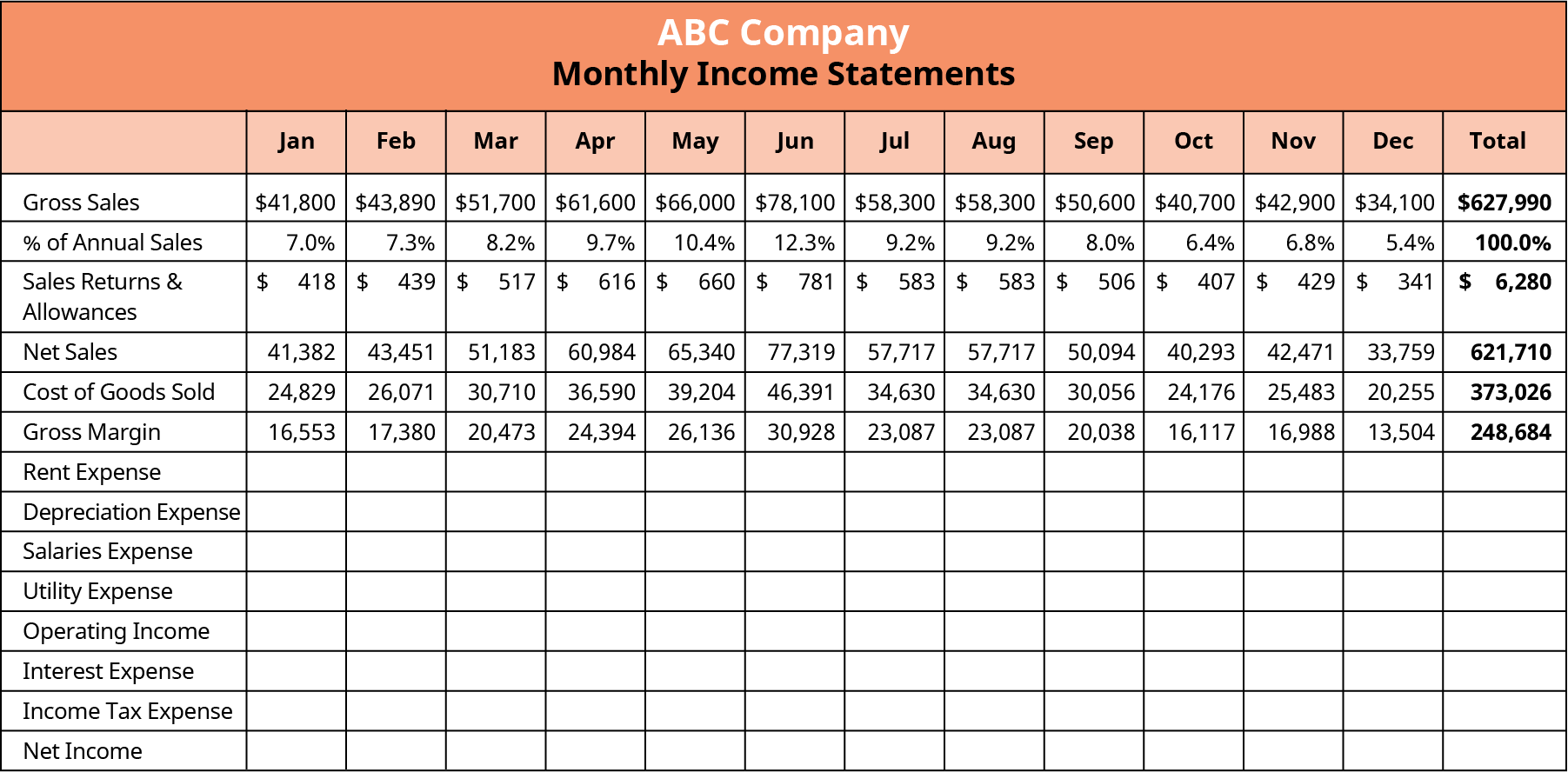2. Using the same data as in Problem 1, assume that ABC Company expects a 10% increase in sales in the coming year (10% more than the $575,000 it had in the past year). Prepare its sales forecast, assuming the company breaks its sales down by month using the same percentages as the actual sales from the past year, which you calculated in the first problem.

3. ABC Company anticipates its sales being a bit lower than normal in January and February of the coming year due to major road construction on the street where it is located, which will draw away foot traffic from the store. The company anticipates that this will reduce its sales in these two months by 5%. Use the information from Problems 1–2 to update the sales forecast.
4.ABC Company’s cost of goods sold last year was 60%. It anticipates that this will be the same in the coming year. Its sales returns and allowances are small, normally 1% of sales. Use the information from Problems 1–3 to estimate the company’s sales returns and allowances, net sales, and cost of goods sold and calculate its gross margin.

5. Use the partial income statement generated in Problem 4 along with the following additional information to complete ABC Company’s forecasted income statement in Excel.
- Rent expense is $1,000 per month. However, the landlord has indicated that rent will go up to $1,250 in the fourth quarter.
- Depreciation expense is $2,250 per month and does not change throughout the year.
- Salaries expense is $1,500 per month and is expected to go up by 10% in the second half of the year, when a new compensation plan will be implemented.
- Utilities expense is $5,000 for the entire year and should be allocated to each month based on that month’s percentage of annual sales.
- Interest expense is $500 per month.
- Income tax is 25% of operating income less interest expense.



